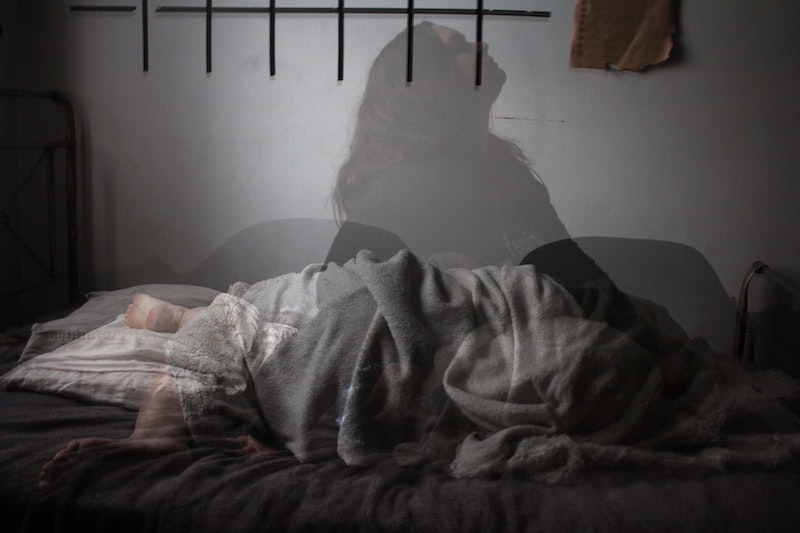If you’re among the third of American adults who spend too much time tossing and turning at night, you might be wondering how to get more ZZZs. So here’s a question for you: What’s your nighttime routine like?
A good nighttime routine goes a long way in promoting healthy sleep habits. In this post, I’m going to share four elements of a solid nighttime routine in hopes that it will help you get more sleep at night.
What Makes a Good Nighttime Routine?
My nighttime routine didn’t snap into place overnight. I still tinker with it here and there, and you’ll need to do the same with yours!
It’s important to keep an open mind when creating routines, and to be willing to try a few things out.
Here are a few evidence-based strategies that you can test.
Keep a Consistent Schedule
What time do you go to bed each night, and what time do you wake up?
If you can’t answer that question in six words or less, your first evidence-based step to getting more sleep is to get into a consistent schedule.
So how, exactly, do you do that? Start by identifying the earliest time you routinely wake up (say, 5 a.m., if you go to the gym early). Subtract at least 7.5 hours from that time, which will give you wiggle room if you don’t fall asleep right away.
This is your bedtime.
Your wake-up time, I’m sorry to say, is the earliest wake-up time on your schedule. Yup, even when you don’t have to get up early.
It’ll feel rough for a few days, but isn’t waking up early worth it if it’ll help you rest easier and feel better?
Try it out for at least 2 weeks and see what you think.
Kill the Blue Light
If I were a betting woman, I’d wager that you reach for a computer, smartphone, or tablet at night. Or maybe you watch some TV?
It’s nothing personal–it’s just a numbers game! According to a 2011 National Sleep Foundation poll, 90% of American adults do it. And I say this with love, but y’all need to knock it off.
Screens emit a type of light called blue light, which increases heart rate, makes you feel more alert, disrupts circadian rhythms and decreases the release of a sleep-promoting hormone called melatonin.
Not what we’re going for right before bedtime, amiright?!?
Your best bet for great sleep is to turn the TV off and stash those devices away at least 2 hours before bedtime. I like to read actual books with pages before bed (but not like John Grisham, because then I run the risk of revenge bedtime procrastination).
Breathwork
Breathing probably isn’t something you spend much time thinking about. The average person takes up to 23,000 breaths per day without much thought or effort.
That said, most of us could stand to be more intentional with how we breathe. And bedtime is the perfect time to practice breathwork.
Deep belly breathing relieves stress and anxiety, relaxes the body, and lowers the heart rate.
I’ve recently been using a device called a Dodow before bed (or if I wake up in the middle of the night), which makes it easy to start a breathwork practice.
The Dodow is a small, battery-operated disc that projects a dim blue circle that expands and contracts on your ceiling. You simply watch the circle, inhale while it’s expanding, and exhale while it’s contracting.
Breathing with the circle gets you into a breathing pattern called cardiac coherence, which has been shown to significantly improve sleep in people with insomnia.
Do you need to invest in a gadget to reap the benefits of breathwork before bed? Not necessarily.
You can practice cardiac coherence breathing on your own by inhaling for five seconds and exhaling for five seconds so that you’re breathing at a rate of six breaths per minute. Shoot for 20 minutes of breathwork, unless you fall asleep mid-practice.
White Noise
Am I the only one who shoots out of bed at the tiniest noise, then stays awake for hours convinced a serial killer is prowling my hallways?
Even if you’ve never had that experience, I’m guessing you’re jolted awake by sudden noises at least every now and again. And if it happens to you often, you might benefit from some white noise.
White noise is constant low-level sound that can help prevent sound-related wakeups by buffering sudden changes in volume. Plus, the sound is relaxing in and of itself.
I’ve drifted off to the sound of an old-school box fan for as long as I can remember. When that’s not possible, I like Erik Eriksson’s 12-hour white noise playlist on Spotify.
Ready to Build Your Nighttime Routine?
Hopefully, you now have a couple of ideas for building your own nighttime routine for better sleep.
My suggestions to you? Layer them in one at a time, and pay attention to how you feel. You might not need (or even like) all four of these strategies. Testing them one at a time gives you more clarity about which ones have the greatest impact.
Now, I want to hear from you. Have you tried any of the strategies above, and did they help? And more importantly, do you also assume that every bump in the night is a serial killer lurking in a closet? Share your thoughts in the comments.
You may also like:
- Should You Try CBD for Sleep?
- Having Trouble Sleeping? Here’s How to Rest Easy.
- Can You Lose Weight While Sleeping?
Disclosure: While we only recommend products we use and love, this post contains an affiliate link. This means that we may receive a small commission, at no additional cost to you.

